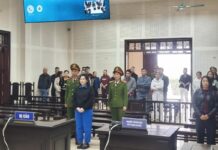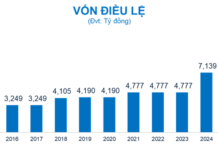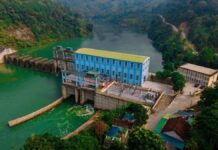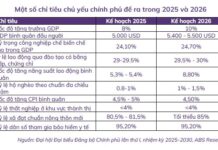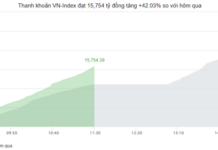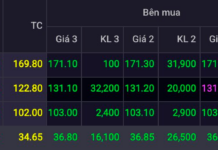VinSpeed Railway Investment and Development Joint Stock Company has unveiled the Environmental Impact Assessment (EIA) report for the Hanoi – Quang Ninh high-speed rail project, marking a significant milestone in realizing this strategic transportation route.
With a total investment of VND 138.930 trillion (approximately USD 5.3 billion), the project has been incorporated into the National Railway Network Plan for the 2021-2030 period, with a vision towards 2050.
This project stands as one of the two high-speed rail lines prioritized for investment before 2030, alongside the North-South line spanning from Ngoc Hoi Station to Thu Thiem, covering a distance of 1,541 km.
As proposed by VinSpeed, the 120.4 km railway will traverse 22 communes/wards across four provinces/cities: Hanoi, Bac Ninh, Hai Phong, and Quang Ninh. It commences at the National Exhibition and Convention Center (Co Loa) and concludes at Ha Long Station within the Tuan Chau Forest Park.
The project adopts the international standard gauge of 1,435mm, with full electrification along the route. The design speed is set at 350 km/h on the main line and 120 km/h for the Hanoi section. The system includes four main stations (Co Loa, Gia Binh, Yen Tu, Ha Long) and two depots at Co Loa and Ha Long.
In terms of construction, 96.7% of the line will be elevated on viaducts and overpasses, while only 3.3% will be at ground level, optimizing urban space and minimizing disruption to existing traffic.
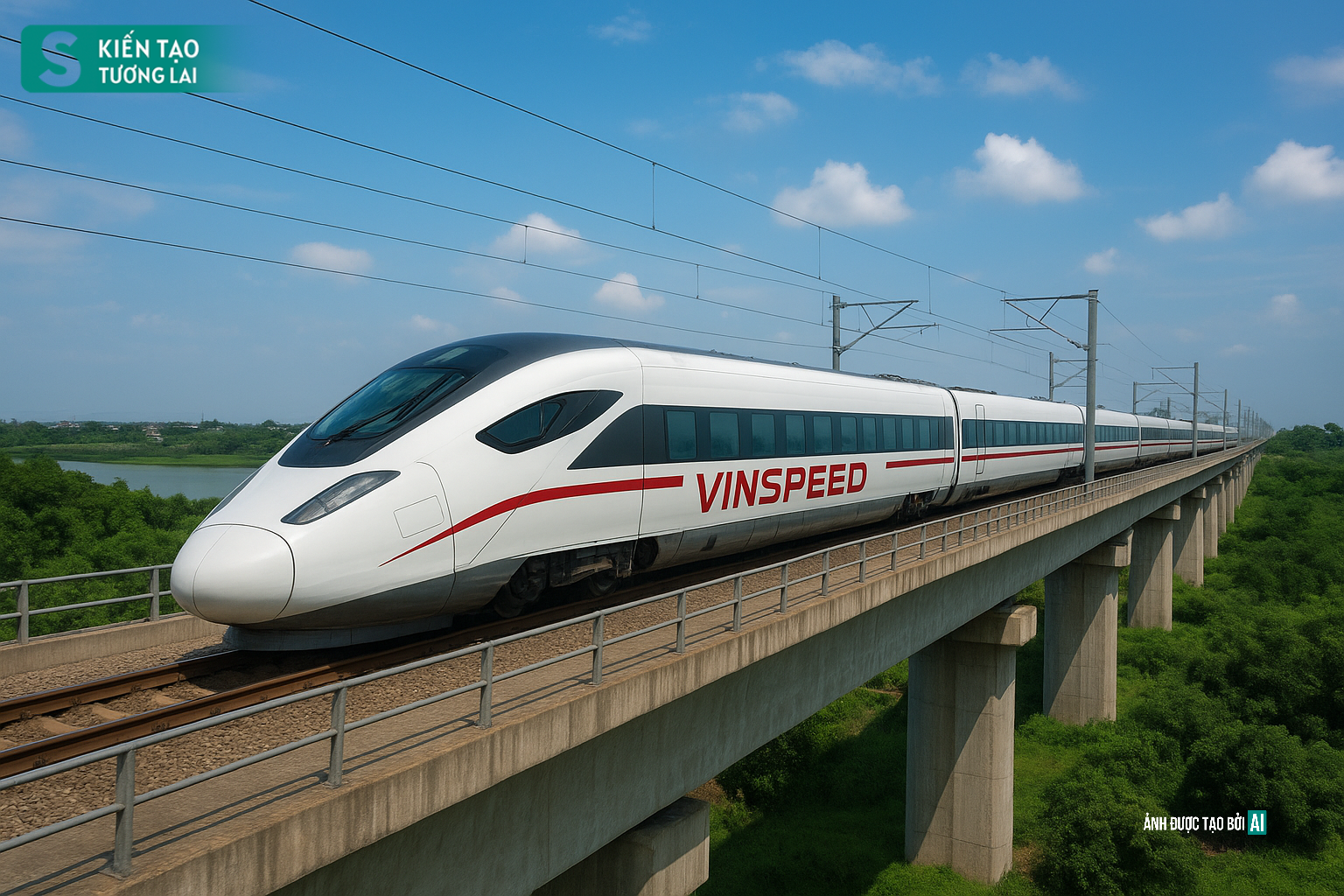
96.7% of the line is elevated on viaducts and overpasses – AI-generated illustration
Proposed Route Through Gia Binh Airport
According to the route consultation, the 18.1 km section through Hanoi originates from the National Exhibition and Convention Center (Co Loa Station). It follows the median strip between the Tu Lien Bridge connector road and National Highway 3, then turns right into the corridor between the 500Kv power line and the parallel road of VĐ3. After passing Ninh Hiep Intersection, it enters the corridor between the parallel road and the expressway connecting Gia Binh Airport, extending to the end of Hanoi’s jurisdiction.
This plan includes Co Loa Station at the starting point (connecting to Urban Railway Line 4) and a depot covering approximately 8.5 hectares, located in the planned green park area adjacent to the Tu Lien Bridge connector road.
The section through Bac Ninh Province passes through communes/wards including Tri Qua, Thuan Thanh, Mao Dien, Tram Lo, Gia Binh, Lam Thao, Luong Tai, and Trung Kenh. It follows the median strip of the expressway connecting Gia Binh Airport to Gia Binh Station. After Gia Binh Station, it continues along the expressway’s median until the end of Gia Binh Airport’s boundary, entering Hai Duong Province (now merged into Hai Phong City). The route then proceeds northward for approximately 2 km, near the confluence of the Thai Binh and Kinh Thay Rivers, before turning right into Hai Phong City at Lau Khe Ferry Terminal.
The section through Hai Phong City passes through communes/wards: Tran Phu, Le Dai Hanh, Bac An Phu, and Nhi Chieu. It heads south through Tran Phu, crosses the Kinh Thay River at the boundary with Le Dai Hanh Ward, and crosses the river again at Bac An Phu Ward.
In Quang Ninh Province, after crossing Da Vach River, the route passes through Hang Que Ward to Yen Tu Station. Beyond Yen Tu Station, it runs parallel to the B12 oil pipeline corridor in Uong Bi Ward, turns right at Dong Mai Commune, and proceeds north of Na and Vu Tuong Mountains.
Hanoi – Quang Ninh High-Speed Rail May Begin Test Runs in Late 2027
VinSpeed’s report anticipates project approval in Q4/2025, with a 24-month construction period from Q4/2025 to Q4/2027. Test runs are expected by late 2027, with commercial operations starting in Q1/2028.
From 2028 to 2035, the system will operate 4 train sets with 16 cars, increasing to 8 sets (32 cars) from 2035 to 2050. Trains will run 18 hours daily (5 AM – 11 PM) with an initial frequency of 60 minutes per trip, reducing to 30 minutes from 2030.
Passenger numbers are projected to rise from 2.164 million in 2028 to 15.225 million by 2050, with Co Loa and Ha Long Stations expected to handle the highest volumes.

Projected passenger volumes at stations along the high-speed rail line
The EIA indicates the project will utilize 489.25 hectares of land, primarily comprising annual cropland (226.98 ha) and perennial cropland (97.28 ha). It will impact 555 households, requiring the relocation of 666 individuals.
VinSpeed is committed to stringent environmental protection measures, including wastewater treatment systems, noise and vibration control, and solid waste management. The total budget for environmental protection works is estimated at VND 3.225 billion.
The Hanoi – Quang Ninh high-speed rail project not only modernizes transportation infrastructure but also drives socio-economic development along the Hanoi – Bac Ninh – Hai Phong – Quang Ninh corridor, solidifying Vietnam’s position in advanced high-speed rail technology.
High-Speed Rail Route Adjustment: Connecting Ho Chi Minh City Center to Can Gio
The high-speed rail line connecting downtown Ho Chi Minh City to Can Gio will originate from the Ben Thanh Market area, rather than the previously proposed Tan Thuan Ward (former District 7).
Ho Chi Minh City Supports Relocating the Starting Point of the High-Speed Rail Line HCMC – Can Gio to Ben Thanh as Proposed by VinSpeed
The Ho Chi Minh City People’s Committee has endorsed the relocation of the starting point for the urban railway line connecting downtown Ho Chi Minh City to Can Gio. The new starting point will shift from Tan Thuan Station to Ben Thanh Station, streamlining connectivity and enhancing urban mobility.
VinSpeed Appoints New CEO
Phạm Thiếu Hoa, Chairman of Vinhomes, has been appointed as the new CEO of VinSpeed, a Vingroup subsidiary specializing in railway infrastructure construction.










